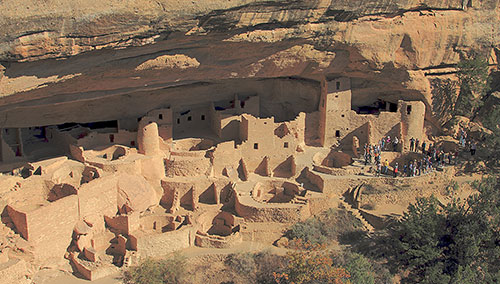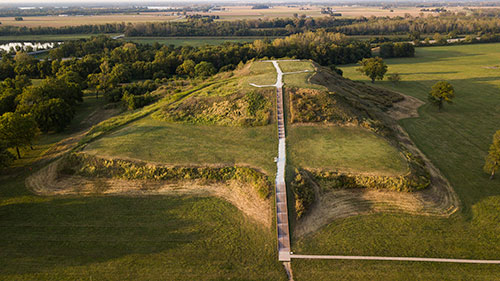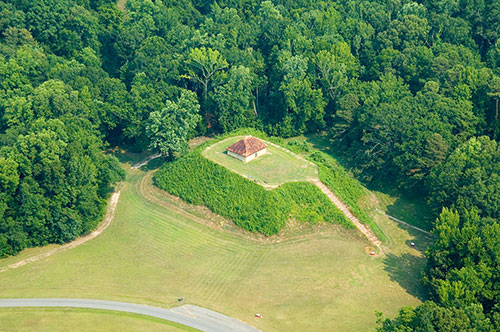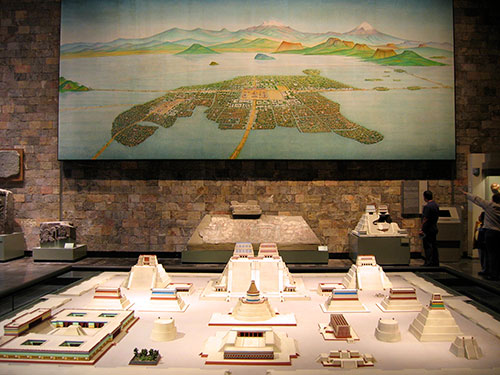Learn
Native Peoples Come to the Americas
Around 1492 when Columbus arrived in the West Indies, there were already many tribes of indigenous native to a particular place peoples living in the Americas. In fact, historians today believe that as many as 100 million Native Americans may have inhabited the Americas in the late 15th century, mostly in what is today Central and South America!
The story of the first Americans begins long before that. In fact, historians now believe that the first Americans may have arrived as long as 22,000 years ago during the Ice Age. Because the ice had frozen parts of the seas, an exposed land bridge emerged across the Bering Strait from Russia to Alaska. Ancient peoples likely migrated to the Americas via this mass, now known as the Beringia land bridge.

After this migration, the Native Americans were mostly nomads who traveled from place to place in search of food and water without settling. They were primarily hunters and gatherers. As they moved further south into North, Central, and South America, they began planting crops like maize corn . Slowly, they transitioned into an agricultural society. This development led to more permanent settlement patterns, which allowed the tribes to establish civilizations an organized society that has developed a system of government, language and economics .
Cliff Dwellers and Mound Builders
Among these civilizations were the Cliff Dwellers and the Mound Builders. An example of a Cliff Dwellers society was the Anasazi who populated the present-day states of Utah, Colorado, Arizona, and New Mexico and were known as desert farmers.

The Mound Builders mainly populated the area east of the Mississippi River, the present-day American Midwest and Southeast. An example of a Mound Builders' civilization was the settlement at Cahokia in present-day Illinois. This settlement was located along the banks of the Mississippi River overlooking present-day St. Louis, MO.

Mound Builders also populated our state. Moundville Archaeological Park, located in Moundville, Alabama, just south of Tuscaloosa, is a historical site of Native American mound dwellers who lived along the Black Warrior River.

Native Americans in Alabama
In our state of Alabama, there were 4 main tribes: the Cherokee, the Choctaw, the Creek, and the Chickasaw. The largest of these tribes was the Creeks.

A smaller tribe – the Alabamas – also lived among these main tribes. Our state and the Alabama River are both named for this tribe.
Mesoamerican and South American Tribes
Aztecs
At the time of European exploration in Mesoamerica present-day Mexico lived the Aztecs. The Aztecs were highly skilled and advanced in art, architecture, language and agriculture.

Their empire covered roughly 80,000 square miles in Mesoamerica and their capital was Tenochtitlán. (Here's how to pronounce Tenochtitlán.)

The Aztecs were known for their military conquests and their society thrived until the Spanish conquest of the early 16th century by Hernán Cortés.

Incas
In western South America (near present-day Peru) were the Incas. The Incas were known for their engineering and architectural feats, including the construction of huge palaces and pyramids with temples at the top.

Although they were also an advanced tribe, power struggles within the tribe and disease decimated their numbers, making them an easy target for conquest in the early 16th century by Spanish explorer Francisco Pizarro.
Similarities Among Tribes
These tribes were very diverse in their beliefs and their ways of life, but they had similarities to each other as well. Evidence suggests that these early tribes established trade networks to facilitate the exchange of goods. However, as skilled as these tribes were at trade, they did not believe in trading land. For them, land represented the source of life and was not viewed as a good or commodity.

Another similarity among most Native American tribes was their religious belief in spirits that filled the natural world. In this way, the Native Americans could be thought of as polytheistic belief in more than one god .

The tribal societies placed a strong value on family bonds as a way to continue the tribe itself and their customs. A benefit of these close family ties was the survival of tribal customs. Another benefit was an establishment of division of labor — the assignment of tasks by age, gender, or social status — which ensured that the members best equipped for the tasks completed them.
As you can see, the Native American tribes were well-established in their ways of life, but their encounters with Europeans in the 15th century would change their societies for centuries beyond.